They provide shoppers with good value for money, give you a stream of regular customers, and provide the helpful service of conveniently solving shoppers’ dilemma of what they are having for breakfast, lunch and tea. What isn’t there to like about the meal deal?
According to HIM, top-up shops, newsagent and food-to-go customer missions account for 77% of all shopper visits to c-stores, with 20% of these visits for food to go, primarily breakfast and lunch.
Round-the-clock retailing
Sunder Sandher, of One Stop in Warwickshire, has tailored his breakfast offer to ensure it is unlike those of his rivals. “I needed to do something different to stand out against the other retailers nearby, so I introduced a bake-off breakfast offering,” he explains.
From 7am to 10.30am customers can buy a croissant and a coffee for £2, giving Sunder a 30% profit margin.
Although breakfast is by far Sunder’s best-seller, he also caters for lunchtime and evening meal deals, which each have a profit margin of between 18% and 25%. Starting from 11am and running throughout the day, Sunder offers a sandwich, drink and a packet of crisps or confectionery for £3.
He adds: “I make the most sales during 12pm and 5pm. I have to follow the big boys, and that means keeping food-to-go available till it sells out.”
Meals for tonight include a bundle deal for £6. Sunder offers a starter, main course and a dessert made up of One Stop own-brand lines. However, he also uses some local suppliers in his deals, which are priced at three for £6. Sunder says: “I see some people three times in the same day, popping in from the local offices for different bits, so I have to give them choice.”
Sunder uses POS material to advertise the meal deals, placing shelf barkers at the fridges reading ‘main, snack and drink for £3’. He uses these three words to clearly label each specific line so customers know exactly what is included, keeping meal deals quick and easy for his customers.
Meals for tonight and food to go have seen strong growth, both up by 4% since 2013 says HIM, which predicts that meals for tonight and food to go will continue to grow and by 2018 could account for just under a third of all missions.
David Knight, who owns two Budgens stores in Hassocks and Henfield, West Sussex, offers meal deals covering both lunch and evening meals, but not breakfast as there’s not the demand for it.
His lunchtime deal comprises a drink and a sandwich, paired with either a piece of fruit, cookie or packet of crisps, all for £3.50, and it’s bringing in customers who make his store the place to buy lunch.
“The meal deal is doing really well for us; people know what to expect when they come into our store,” says David.
Paul Stone is another retailer who has embraced meal deals in his busy Spar stores in Manchester. Paul is open 24 hours a day, with an alcohol licence until 3am. The shop is in the heart of the city, crawling with students looking for quick meal solutions. Paul focuses heavily on his breakfast and lunchtime meal deals, but makes up meal-for-tonight deals from Spar own label products. This way, he can offer a stir-fry, to include fresh chicken, noodles and a sauce, for £5.
With food-to-go playing such a big part of the sales mix, keeping up with demand to ensure a constant flow of hot food from morning till night might be tricky. Not so for Paul, who also owns the Cheeky Coffee cafe, which he set up across the road from his store in 2011.
Here a full bake-off system makes all his breakfast meal deal items, as well as fresh sandwiches and salads. When supplies run low, all Paul and his staff have to do is transport the food across the road in roll cages.
“Food-to-go is the reason to visit my store,” Paul says, who reveals that some 40% of sales come from the category.
For breakfast he offers a hot pastry and hot drink for £2.50. The pastries come in seven varieties, including egg and bacon, and sausage and bacon, with sausage rolls and chicken fillet burgers also included the deal. “Chicken fillet burgers are our best seller; we sell about 140 a week,” says Paul.
Lunchtime deals include a wrap, sandwich or salad pot, partnered with a snack and a drink, for £3.
In addition, Paul has freshly baked pain au chocolat and croissants in store, which he sells two for £1, and a Quaker oats porridge pot and Tropicana juice deal for £1.80.
To draw attention to the deals, Paul uses media screens dotted around the store to promote what’s on offer. On average, he sells 109 meal deals a week, with his hot drinks sales reaching 700 cups in one week.
But it’s not just morning and lunchtimes that retailers can exploit. Katie Littler, HIM insights director, says there’s an opportunity to offer meal deals to indecisive customers who want something to eat that night. “Between 3pm and 5pm, one-third of UK adults don’t know what they are having for dinner that night; they need inspiration and simple solutions,” she says.
David agrees this time frame offers plenty of potential. “Although we do well at lunchtime, our real customer missions begin after lunch as our customers are then looking for easy, quick food for dinner,” he explains.
“We have ready-made meals and semi-prepared meals next to the vegetables, followed by the alcohol at the back of the store, putting everything the customer needs in close proximity.”
David compares his evening meal offerings to that of M&S, giving shoppers the option to buy two meals and one side for between £8 and £10. He recently introduced an Old El Paso fajita kit which he sites alongside chicken breasts and peppers in the chiller. David is offering all of these ingredients and two beers for £10.
Colin Chapman, operations director at retail display firm CJ Retail Solutions, advises those looking to add or extend their meal deals to make sure shoppers are clear about what they’re getting. “Clearly labelling the products which fall into the meal deal category is crucial; customers don’t want to spend time searching for what’s included,” he says.
“The signage and POS material used to promote meal deals should be kept impactful, but generic,” he adds.
David puts recipe cards throughout the first aisle of his stores to inspire his dinner-time customers. “When a customer first walks in you don’t have their attention for very long. We try to make things easy for people.”
Another way to get meal deals off the ground is to include big-name brands. Jo Hartop, head of corporate and trade communications at Ginsters, says consumers have one eye on the label when buying a meal deal. “Shoppers look for trusted brands within a meal deal and affordable solutions to eat on the move,” she says. “Combine our Ginsters range of products with other well-known brands in the crisps, snacks and soft drink categories.”
Even though the multiples are old hands at the meal deal mechanic and may have the advantage when it comes ability to offering range and value, it doesn’t mean a retailer can’t think outside the box. Chapman says retailers can expand on what the multiples have done already. “Thanks to the early pioneers such as Boots and the popularity of mechanics such as Marks & Spencer’s Dine in for £10, convenience retailers are well-placed to maximise on this as long as they get their POS and ranging right.
“Convenience operators need to focus on providing a well-presented and carefully thought-out meal deal based on an in-depth understanding of their customer base.”
David Bridge, owner of Here to Please You stores in Bolton, has spent the past few years experimenting to find the best meal deal for his store. In 2008 a Tesco Express opened opposite his shop with a lunchtime meal deal for £3. After trialling sandwiches, David realised it was an area he couldn’t compete on against Tesco, so he tried something different.
David now sells a hot pie and a soft drink for £1.99, starting from first thing in the morning until they sell out, usually at about 2pm. “You would be surprised at the amount of school children who come in at 7.15am for a pie,” he says. “As well as the children who get a hearty breakfast, our main meal deal customers are loyal workmen who pass through daily.”
He advises others to think about what works for them. “The only way to find the right offer is through trial and error,” he says. “Many retailers only present a small deal to their customers, whereas those who have the space and the right customers can offer a wider range of products in their meal deals, comparable to any supermarket.”
IN BRIEF
Danone promotes Activia range
Danone Activia has launched a £2.5m media campaign to encourage consumers to join the happy tummy movement and start looking after their digestive system. The campaign features Gok Wan as well as Activia fans and runs across TV, digital and through interactive shopper pop ups.
Ginsters pasties make a return
Ginsters has introduced a range of limited-edition savouries. The Ginster’s classic steak & ale pasty, made using 100% British beef and with an rrp of £1.99, has returned alongside a new sausage & onion slice. The recipe uses 100% British pork and contains sausage, pork & thyme stuffing, topped with onions & gravy, also with an rrp of £1.99.
Yazoo Smoothies hit the shelves
Yazoo has launched a new range of yogurt smoothies in a 330ml format. Available in strawberry & raspberry and mango & pineapple variants, the smoothies have an rrp of £1.40 and are aimed at people on the go.
KP adds Hula Hoops Puft
KP Snacks has unveiled a new lighter version of Hula Hoops. Hula Hoops Pufts are a lighter and crispy version of Hula Hoops and come in a 20g pack (rrp 55p) in a cheese variant, a first for the brand.
Hot property
Walkers is extending its Max range with the addition of a Flamin’ Hot variant.
New Flamin’ Hot 50g (rrp 79p) packs sit alongside the existing cheese & onion and paprika Walkers Max flavours, which are exclusive to the convenience channel.
Source
Katherine Brook






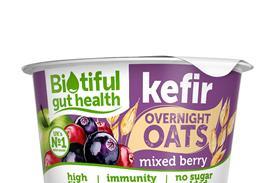


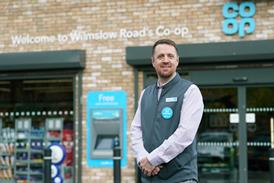






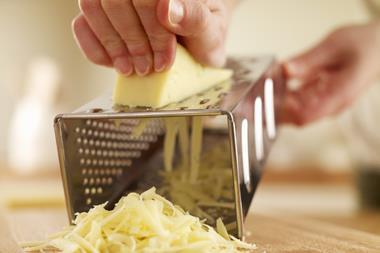

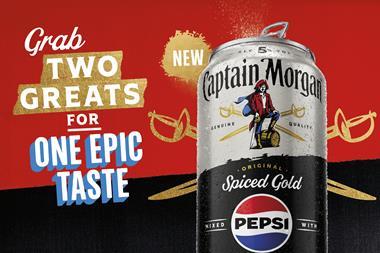
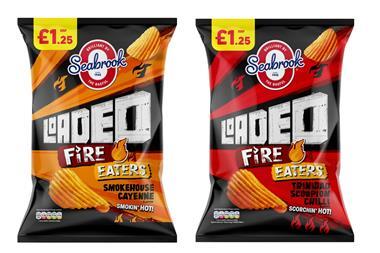
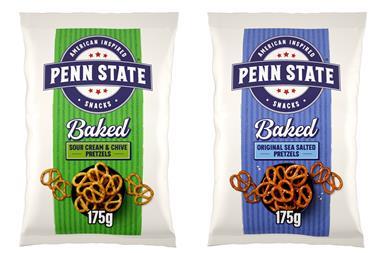
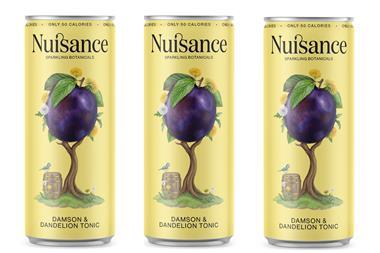






No comments yet